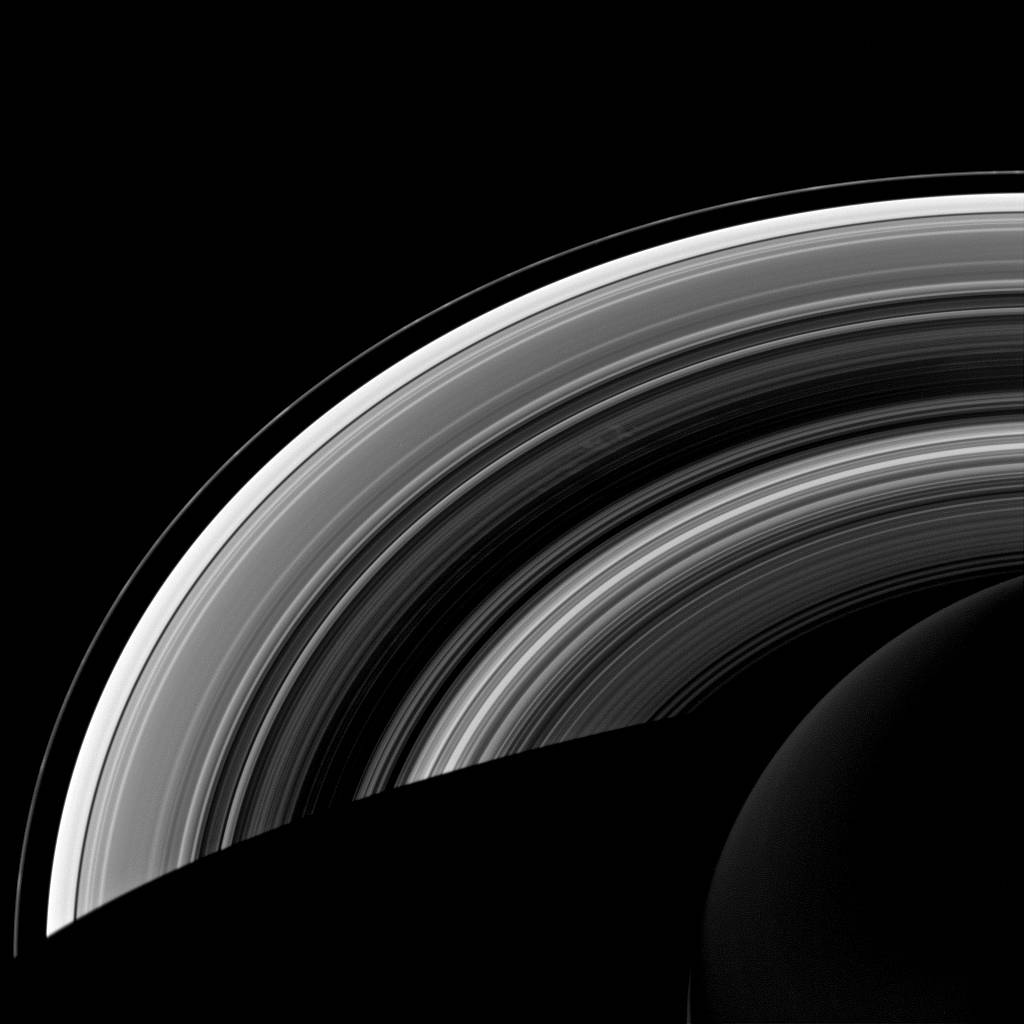
The spokes in Saturn’s rings continue to be active and Cassini scientists continue to study them in order to unravel their mysteries. The spokes, visible near the center of the image, appear bright against the dense core of the B ring, which is the darkest section of the rings shown here in silhouette. Conditions favorable to the production of spokes are expected to wane as Saturn approaches its northern summer solstice. Scientists are eager to monitor the transition, the timing of which could yield valuable insight into the mechanisms that form these intriguing and ethereal features.
This view looks toward the unilluminated side of the rings from about 47 degrees below the ringplane. The image was taken in visible light with the Cassini spacecraft wide-angle camera on Oct. 19, 2013.
The view was acquired at a distance of approximately 1.2 million miles (1.9 million kilometers) from Saturn and at a Sun-Saturn-spacecraft, or phase, angle of 122 degrees. Image scale is 72 miles (115 kilometers) per pixel.
The Cassini-Huygens mission is a cooperative project of NASA, the European Space Agency and the Italian Space Agency. The Jet Propulsion Laboratory, a division of the California Institute of Technology in Pasadena, manages the mission for NASA’s Science Mission Directorate, Washington, D.C. The Cassini orbiter and its two onboard cameras were designed, developed and assembled at JPL. The imaging operations center is based at the Space Science Institute in Boulder, Colo.
For more information about the Cassini-Huygens mission visit https://www.nasa.gov/cassini and http://saturn.jpl.nasa.gov . The Cassini imaging team homepage is at http://ciclops.org .
Credit: NASA/JPL-Caltech/Space Science Institute




























